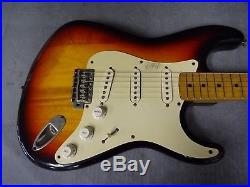

Illustrated in the "History of Electric Guitars" are three guitars which probably reflect this early line. Based on the evidence of slightly later designs and the vogue for copying at the time, it's probably safe to assume these were mainly inspired by popular American designs. Noguchi recalls them as being pretty much low end instruments when compared to other brands available at the time, including Greco, Tokai, Guyatone, Fernandes and Ibanez. Little is known of these early Fresher guitars, but Mr. The company is still in operation, importing Charvel/Jackson, Takamine and Dean Markley products, among others.įresher guitars were built by the Matsumoto Musical Instrument Manufacturers' Association. Kyowa was primarily a trading company, importing products and developing some musical instruments. Nagoya, you'll recall, is one of the principal guitar-making regions in Japan. The Fresher story begins back in 1973 when Fresher guitars were introduced by the Kyowa Company, Ltd., of Nagoya. Despite the fact that examples occasionally show up, as of now there is no evidence that Fresher guitars were ever officially imported into the United States.

Greco stratocaster images series#
Perhaps the following information will help clarify these questions.ġ982 was the first year Fender produced the American Vintage Reissue series and the first guitars had some unique idiosyncrasies. We get occasional questions from owners and buyers of 1982 Fullerton American Vintage Reissue guitars about the specifications of the early 1982 models. For the entire story we suggest you read the book, The Fender Stratocaster by A. These first few years (1982 - 1984) of reissues are some of the finest to ever leave Fender's factory. This project was very important and critical to the survival of Fender. They decided to manufacture a 19 Stratocaster along with the 1952 Telecaster.
Greco stratocaster images how to#
Dan Smith, with Fender's approval, literally shut down the Fender plant and spent approximately 2+ years training what employees were left how to build a quality guitar.ĭan Smith, with the help of John Page, proceeded to work on a reissue of the most popular guitars of Leo Fender's era. The factory at this time was building about 200-300 guitars a day.

It was Dan Smith's goal to restore the confidence of the dealers and guitar players in Fender once again.

In late 1981 Fender hired Dan Smith to head up marketing and help turn Fender's quality issues and lagging sales around.


 0 kommentar(er)
0 kommentar(er)
